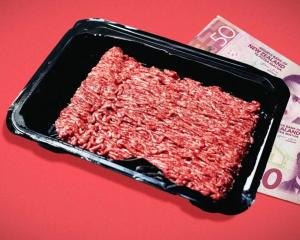
Fewer breeding ewes is spiking demand for lambs, a southern agent says.
PGG Wrightson auctioneer Mark Yeates, of North Otago, has been in the game for 40 years and had never known sheep prices and feed supply to have such a favourable turnaround in a 12-month period.
‘‘It is the biggest turnaround from one year to the next that I’ve seen. The difference is quite remarkable,’’ he said.
About 100 people attended the Maniototo Last Muster Lamb Sale at the Waipiata Saleyards last week.
Everything on offer sold, producing a record sale average of $149 per head.
‘‘It was a very strong market, with a lot of bidding,’’ he said.
About 45 buyers registered. Prices ranged between $100 and $175. Most were sold to farmers in Canterbury.
Mr Yeates said many local farmers wanting lambs went home empty-handed.

More farmers were finishing sheep and beef, rather than breeding them, he said.
‘‘It has reached a stage where we are lacking the critical mass of breeding ewes required to fulfil the requirements of people wanting to finish lambs — we need more people breeding lambs and calves.’’
Land-use changes, including dairy, forestry and land being locked up for environmental reasons, had reduced the number of capital herd and flocks.
In recent years, some farmers had stopped running sheep because they had become disillusioned by low financial returns.
About 11,500 lambs were offered at the sale, down about 1500 on last year’s sale.
Many farmers were holding on to lambs as conditions were more favourable than last season.
‘‘The winter crops are outstanding and they want to utilise that,’’ he said.
Fourth-generation sheep and beef farmers Terry and Maria Bamford travelled from their 500ha farm, running merinos, in the Hurunui Hills to attend the sale for the first time.
Mr Bamford said they had recently leased some land and wanted to buy 1000 straight merino lambs but prices were too high as there was plenty of feed available now: ‘‘It has been a great season’’.

On the trip down, they bought some merino lambs in Temuka but, as there were no straight merinos on offer at Maniototo and prices were high, they left empty-handed.
Simon Paterson, of Armidale in Gimmerburn, offered a pen of 55 halfbred wether lambs and a pen of 88 halfbred ewe lambs.
He usually sold more lambs at the sale but favourable conditions meant the flock had performed better and some lambs were big enough to shear and kill.
His wethers fetched $169 each and the ewes $162.50.
Mr Paterson said the sector was ‘‘in a much better space’’ than at the same time last year, when they had been feeding out for 10 weeks.
‘‘Everything is good. We have a bit of grass and stock is healthier with good covers going into winter.
‘‘This year, we probably won’t start feeding out for at least another month. That difference is huge,’’ he said.

Vendor Jamie McMillan, of Naseby, sold 310 halfbred wether lambs for $121 each and 390 halfbred ewes for $128 each.
The weather had been great for farming, raining ‘‘every other week; it’s been really good’’.
Arable and sheep farmer Hamish Hunter-Letham said his family regularly attended the sale to buy lambs to fatten on their crops on their 565ha farm near Methven.
Lamb fattening was a small but key part of their system.
They usually bought 11,000 lambs from sales each year. He believed a profit could still be made, although it would be a smaller margin than last season.














